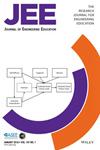Everyday engineering: The effects of transformative experience in middle school engineering
Abstract
Background
Promoting engagement and motivation in early engineering experiences is important for fostering interest and retention in engineering. One method that has been effective for doing so is facilitating transformative experiences (TEs), which occurs when students apply academic content to everyday experience. Our goal was to explore the effectiveness of an intervention to encourage TE, positive emotions, and interest in middle school engineering courses in two differentially resourced schools.
Purpose/Hypothesis
We explored the effectiveness of using the video software Flipgrid as a supplement to a TE intervention to impact TE, emotions, and interest. In addition, we sought to model a theorized predictive relationship between TE, emotions, and interest.
Design/Method
Two hundred seventy-four engineering students across two middle schools with differing levels of resources participated. A cluster-randomized pretest–posttest survey design was used to explore the variables of interest. ANOVA and SEM were implemented to investigate the research questions and hypotheses.
Results
We found mixed results, with the intervention facilitating significantly more TEs and maintaining high levels of positive emotions in a school with access to fewer resources. Furthermore, in alignment with hypotheses about interest development (Renninger and Su, Oxford handbook of human motivation 2012; pp. 167–187), the results showed that initial positive and negative emotions predicted initial interest and post-TE. However, only post-positive emotions and post-TE predicted post-interest. Negative emotions after the intervention did not predict post-intervention interest.
Conclusions
The findings have theoretical implications for interest development and practical implications for targeted interventions in early engineering education, especially for schools with access to fewer resources.

 求助内容:
求助内容: 应助结果提醒方式:
应助结果提醒方式:


